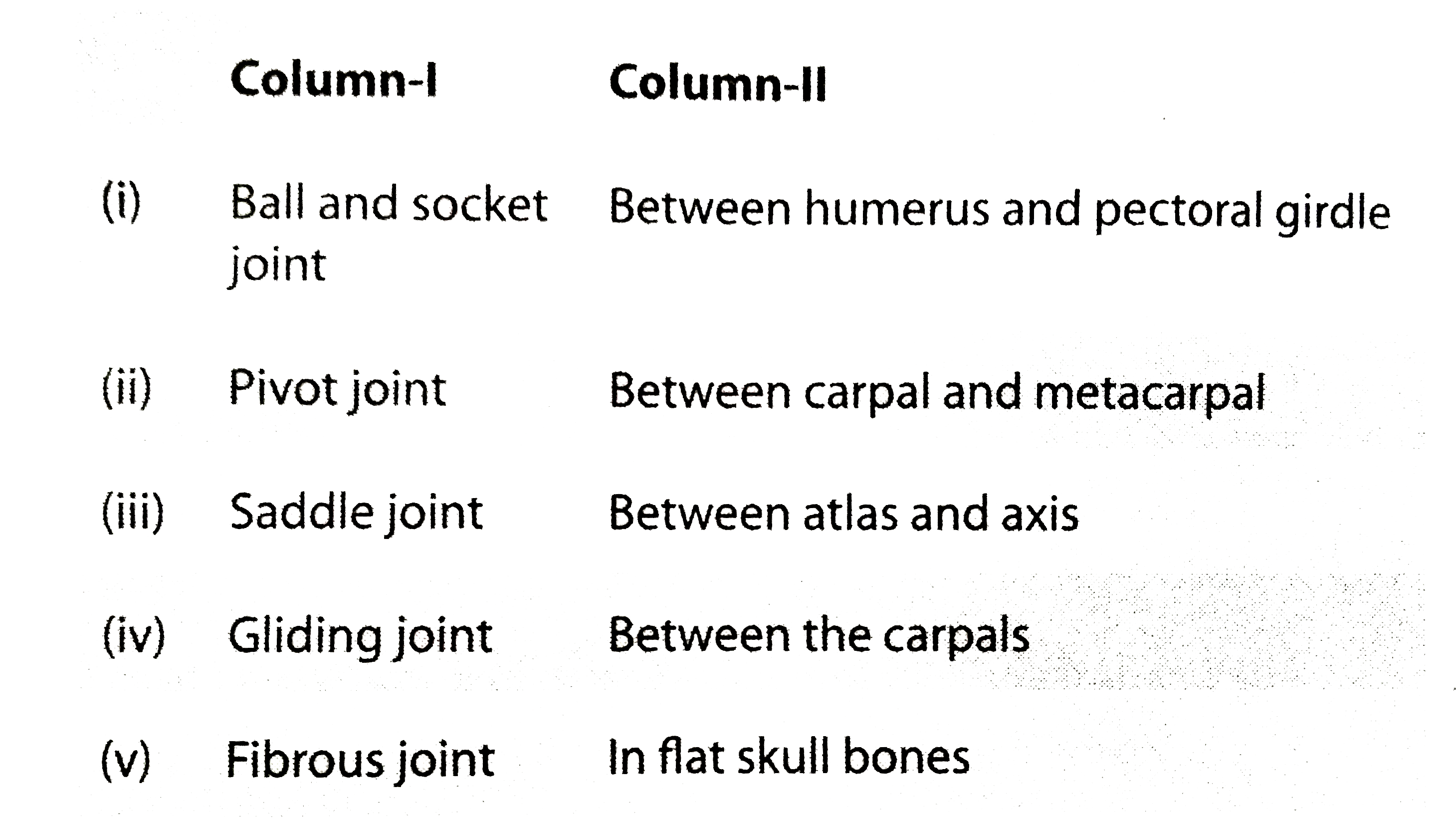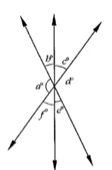The ionisation energies of elements U V W and X are 2480 550 950 and 1690 kJ mol-1 respectively. Which of the statements about these elements are correct? i V is a reactive metal. ii X is a reactive non-metal. iii U is a noble gas. A i and ii only B ii and iii only C i and iii only D i ii and iii
Correct option D i ii and iiiExplanation:As we move across a period from left to right ionisation energy increases due to decrease in atomic size. V is a reactive alkali metal which has low value of first ionisation energy and loses one electron easily to form monovalent cation.X is a reactive non-metal which has high value of first ionisation energy thus it prefers to gain electron rather than losing. U having very high value of ionisation energy is a noble gas which has stable completely filled electronic configuration and is chemically inert.
Related Solutions
Which of the following is/are not carrectly mathched pairs ?

(a) (ii) and (iii)
(b) (i) and (iv)
(c) (v) only
(d) (ii) onlyView SolutionPredict the order of reactivity of following compounds in dehydrohalogenation. a. I. II. III. IV. V. b. I. II. III. IV.
View SolutionPredict the order of reactivity of following compounds in dehydrohalogenation. a. I. II. III. IV. V. b. I. II. III. IV.
View SolutionThe sum of three consecutive odd numbers is always divisible by I. 2 II. 3 III. 5 IV. 6 Only I (b) Only II (c) Only I and II (d) Only I and III
View SolutionThe first (Delta_(i)H_(1)) and second (Delta_(i)H_(2)) ionization enthalpies ("in kJ mol"^(-1)) and the electron gain enthalpy (Delta_(eg)H)("in kJ mol"^(-1)) of the elements I, II, III, IV and V are given below the least reactive non - metal and the most reactive metal of these are respectively
View SolutionLet f be a differentiable function on the open interval(a, b). Which of the following statements must be true?
(i) f is continuous on the closed interval [a,b],
(ii) f is bounded on the open interval (a,b)
(iii)If a < a1< b1 < b, and f(a1) < 0 < f(b1), then there is a number c such that a1 < c < b, and f(c) = 0
(a)Only I and II
(b)Only I and III
(c)Only II and III
(d)Only IIIView SolutionLet f be a differentiable function on the open interval(a, b). Which of the following statements must be true? (i) f is continuous on the closed interval [a,b], (ii) f is bounded on the open interval (a,b) (iii)If a (a)Only I and II (b)Only I and III (c)Only II and III (d)Only III
View SolutionIn Figure, which of the following statements must be true? (i) (ii) (iii) (a) (i) only (b) (ii) only (c) (iii) only (d) (ii) and (iii) only
 View Solution
View SolutionThere are three elements I, II, III and their ionisation energies are given below. {:(IE_(1),IE_(2)),(I 2372,5251),(II 900,1760),(III 520,7300):} Now identify (a) Which element is most reactive ? (b) Which element is noble gas ? (c ) Which can form a stable dihalide ?
View SolutionThere are three elements I, II, III and their ionisation energies are given below. {:(IE_(1),IE_(2)),(I 2372,5251),(II 900,1760),(III 520,7300):} Now identify (a) Which element is most reactive ? (b) Which element is noble gas ? (c ) Which can form a stable dihalide ?
View SolutionIn Figure, which of the following statements must be true?
(i)
(ii)
(iii)
(a) (i) only
(b) (ii) only
(c) (iii) only
(d) (ii) and (iii) onlyView SolutionGiven is product of four consecutive integers. Then which of the following is true? I n is an odd integer II. n is prime. III. n is a perfect square. Only I is correct (b) Only III is correct (c) Both I and II are correct (d) Both I and III are correct
View SolutionWhich of the following statement)s) regarding endosperm is/are correct?
I. Responsible for seed dormancy.
II. Rich in plant hormones.
III. Can be of nuclear, cellular and helobial types.
IV. Occurs Orchidaceae family only.
a) I and II
b) I, II and IV
c) Only III
d) I, II and III
View SolutionObserve the figure given below and select the correct statements . I) The power generation by the above method is non-polluting II) It is a kind of non conventional renewable energy source III) It uses photovoltaic cell I & II only I & III only III only All are correct
View SolutionFor the integer , if is odd, then which of the following statements are true? is odd. II. is odd. III. is even (a) I only (b) II only (c) I and II only (d) I and III only
View Solution(a) a- i ,b-iii,c-ii (b) a-iii,b-ii,c- i (c) a-ii,b-iii,c- i (d) a-ii,b- i ,c-iii
View Solution(a) a- i ,b-iii,c-ii (b) a-iii,b-ii,c- i (c) a-ii,b-iii,c- i (d) a-ii,b- i ,c-iii
View SolutionStatements:- Some benches are autos. All the boxes are autos. All the pens are benches.
Conclusions:- I. Some benches are boxes. II. No pen is autos. III. Some boxes are benches.
(A) None of three
(B) Only I and II
(C ) Only I and III
(D) Only II and IIIView SolutionWhich of the following conditions imply that the real number x is rational ? I is rational II are rational III are rational II x2 and x3 are rational (A) Jand I only (B) I and IIl only (C) Il and II only (D) I, Il and II (A) Jánd II only (B) I and III only
View SolutionOrder of reactivity towards nucleophilic substitution reaction of the compounds
(I) (1) I > II > III > IV
(2) II > I > II > IV
(3) IV > III > II > I
(4) II > IV > II > IView Solution
(1) I > II > III > IV
(2) II > I > II > IV
(3) IV > III > II > I
(4) II > IV > II > IView Solution
